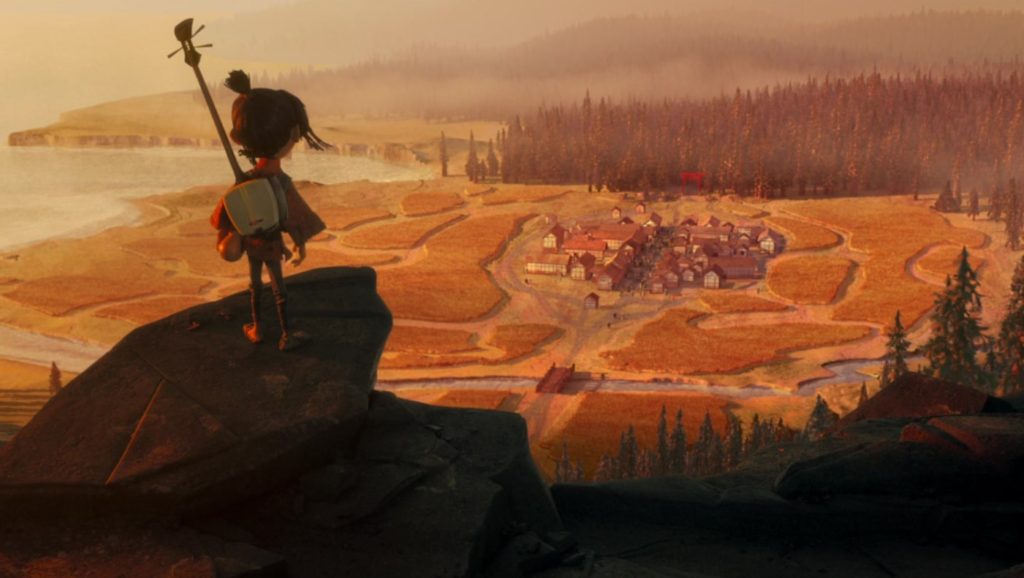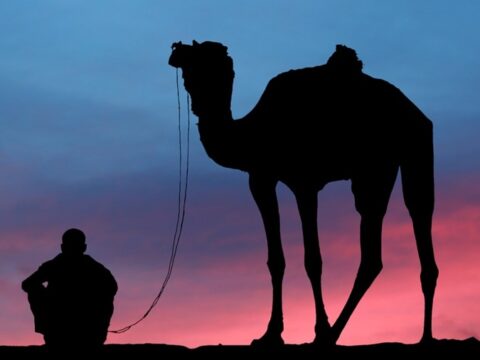When Kubo and the Two Strings first came out in 2016, my friends told me nothing about it. All they said was that I HAD to see it. Maybe it was my total lack of expectations that made my first watch of this artistic and heartrending movie so fabulous. I couldn’t stop thinking about it for weeks afterwards. So naturally when I showed it to my husband for the first time a couple weeks ago, I also gave him no context, no buildup, and no clues that could possibly spoil the experience for him.
He loved the movie, and the film definitely withstood the test of time for me too.
So if you’d rather stop reading now and experience Kubo and the Two Strings with zero expectations, I will not judge you. Really. But if you need a little more than my strong recommendation to know what you’re getting into, I can also respect that. Here are five non-spoiler reasons why this Japanese stop-motion fairy tale is so, SO worth your time:
1. The Script Grabs You by the Throat
Kubo and the Two Strings has an incredible opening line—“If you must blink, do it now”—that launches you straight into this epic adventure. The script is consistently stellar throughout the entire movie and uses narration to weave together this story in a way I had never seen before. We learn very quickly that the titular Kubo and his mother are hiding out in a Japanese-inspired village because they’re being hunted by Kubo’s magical and sadistic grandfather. Apparently the old magician wants the child’s eyes, and he’s already succeeded once. Are you interested yet?

2. There’s No “Main Character Syndrome” Here
Have you ever noticed that the main character is almost always the most boring person in any given story? Not here! The titular Kubo is only ten years old, but he’s also lovely and highly skilled for one so young. Right from the beginning, we see that Kubo has grown up fast as he cares for his mother who has lost her memories and earns money for the family through his unusual talents. Kubo plays his magical shamisen guitar for the other villagers, making paper creatures and champions come to life. As a magical storyteller, Kubo is great at starting stories and not so great at finishing them, but he’d also give anything to know the story of his deceased samurai father. Needless to say, this main character really worked for me.
3. This Story is Original Yet Oh So Familiar
I went hunting for the origins of Kubo and the Two Strings because I was POSITIVE that it was based on a fairy tale. Nope! This movie is a 100% original story, and yet Japanese myth and fairy tales play such a prominent and natural role here. This movie was produced by the Oregon-based production company Laika and written by a team of Americans, but the story has several aspects that remind me of The Tale of the Bamboo Cutter and other Japanese fairy tales.

The animation style plays into this as well. Honestly I had never seen anything like it before or since Kubo. The animation team uses a unique combination of stock animation and CGI effects, and the entire look of the movie is heavily inspired by origami, ink paintings, Noh theatre, and Japanese woodblock prints. The final look is pretty stunning.
4. There’s Lighthearted Fun Here—But Also Chills and Thrills
There’s certainly humor to be had in this movie. Once Kubo sets off on his quest, his companions are a talking monkey and a kooky humanoid beetle, but I have to say that for a kids movie this story gets pretty dark.

The stakes are high, the story does not shy away from death or violence, and the main antagonist sends the most terrifying henchmen ever to hunt down his grandson’s eye. I forgot just how scary Kubo’s moon witch aunts were, floating around with their creepy masks. Don’t get me wrong, they add so much to the movie, but they definitely aged up the kid I would recommend for watching Kubo and the Two Strings.
5. There’s a Beautiful Message about Family Ties Enduring Beyond Death
Rewatching Kubo reminds me just how deep an animated film can be. There’s plenty of animation out there to delight children with goofy and colorful pictures alone, but there are also animators who create real art that says something about life. This is one of those animated movies. The theme that stood out to me the most was finding power in grief—and that the spirits of those who have gone on before you can teach and protect those of us still here.

I found out while researching Kubo and the Two Stings that its director, Travis Knight, connected with the script because he’d also lost a family member around the same time he heard Kubo’s story. So that message stood out to the creators in a way that comes across beautifully in the final film.
Seriously, Try Out Kubo and the Two Strings
I can’t say much else without spoiling it, so do me a huge favor and just watch it. It’s visually stunning, wildly heartwarming, funny, terrifying, and thought-provoking all at once. ❧




